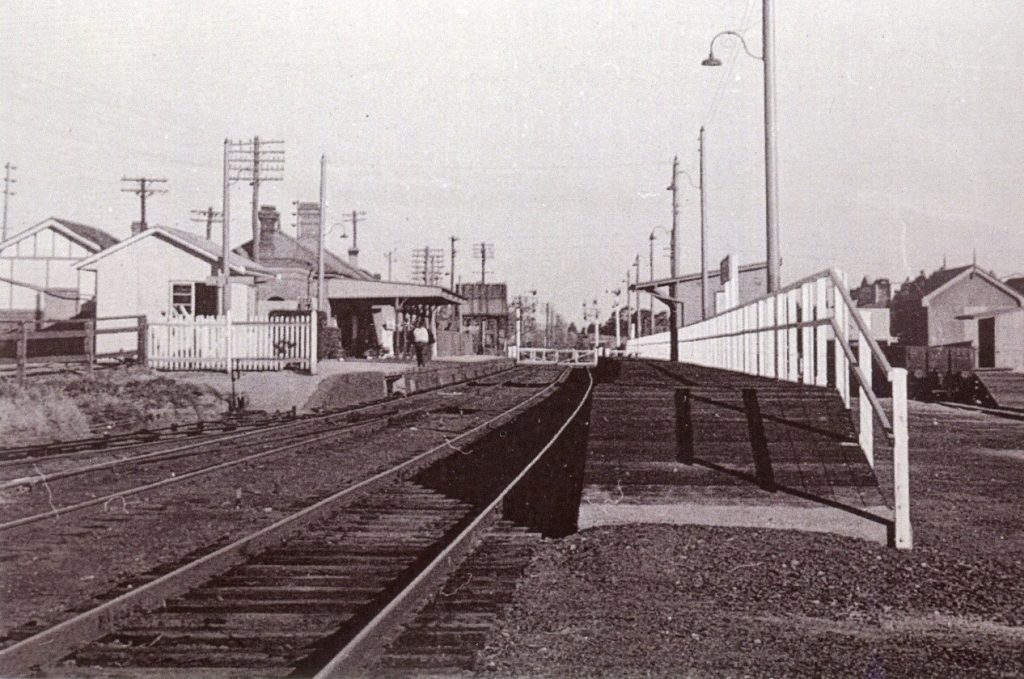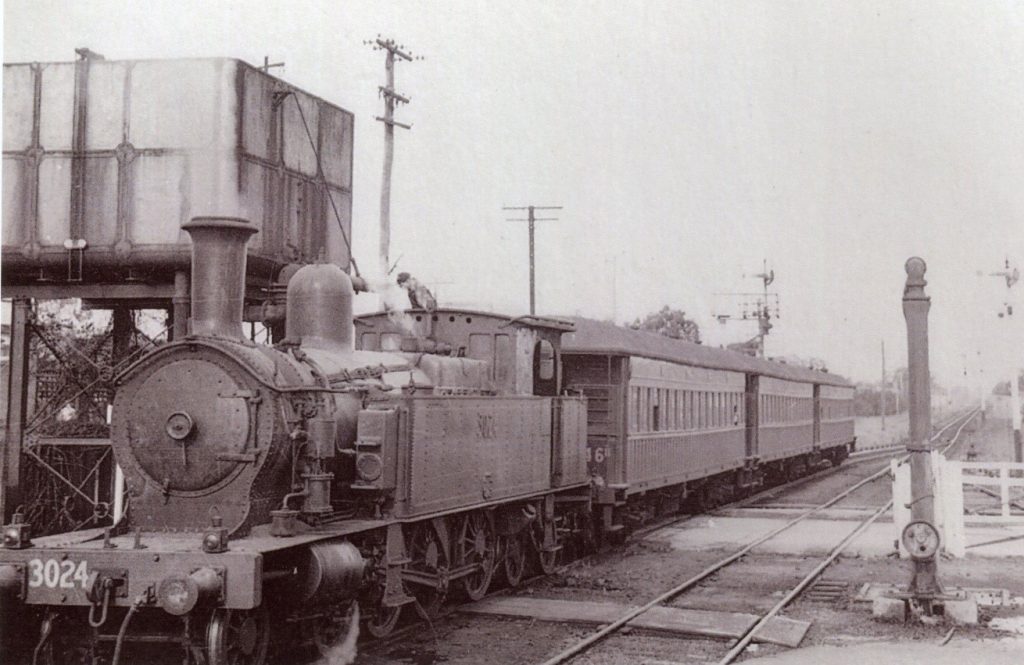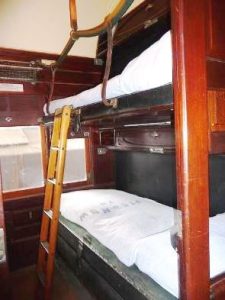by Winsome Phillis (nee Voysey)
The following article was written by Winsome in July 1985 when her daughter Rosemary asked her to write her a story instead of buying a present for her birthday.
When we were children living at 4 Regent Street in the 1930s and 40s, our lives were regulated to a certain extent by two things, the Meatworks whistle and the trains. (Steam trains of course, electric trains were part of the great adventure of going to Sydney.) Dad went to work at the Meatworks and soon after the five o’clock whistle went of an evening we would watch for him to come home ’round the corner’ of Railway Terrace and Regent Street.
Back then we went to school at Parramatta, catching the train was just a normal part of our routine. Later on, you would need to be up before the six thirty whistle went in the morning and ready to leave before the seven o’clock one to catch the train to work in Sydney. The train would always whistle as it came past the Meatworks, so that was an extra incentive to hurry.
We didn’t have a car, so to go out for the day to Sydney or anywhere out of town you walked to the station and caught the train. At Christmas time my sister Elaine and I went on the train to Sydney with Auntie Hazel and Auntie Evelyn. The stations between Blacktown and Parramatta were just two platforms, one each way for up and down. Marayong, Quakers Hill and Schofields like Riverstone only had one platform. They were very quiet little places – dirt roads, open fields, lots of trees and not many houses.

Photo: ARHS – Singleton Collection No:005586
After we finished 6th class at Riverstone we went on to 1st year at Parramatta Domestic Science School. We caught the ten past eight train to school and arrived home about half past four. We never minded travelling, we had a group of friends to go with and something was always happening – like the boys who used to travel in the luggage racks or pop over the back of the seats and pull faces. (There was one little menace in particular whose name I cannot remember, but he was always doing something naughty.) There was also an old man who lived near the railway line at Quakers Hill. We called him Father Christmas and waved to him every morning as he stood on his front verandah.
It was always our custom to wave to Mum and Lal (Aunty Alice who lived on the corner of Railway Terrace and Regent Street) as the train passed our house, coming and going, a habit that continued for years; Mum on the front verandah or at the kitchen window and Lal at her side gate or out in the garden. My sister Gwen would pick up the daily paper at Conway’s and throw it out of the train window each morning. You had to be a good thrower to get it over the railway line fence. I was never very good, but Elaine and Gwen were. One day however the paper ended up on top of the train roof.
The fence along the line was post and rail. At the end of Regent Street the wire was pulled apart with a bag thrown across the gap for easy crossing. There was a proper foot crossing 100 yards further along near Hunter Street, but we never used that. We were always told to be careful of snakes when crossing the line, as well as trains. Uncle Charlie and Dad would cross the line to walk out to Marsden Park. Sometimes we would go for a walk with Uncle Charlie out along the creek – we loved those walks.
Our trains were usually pulled by ordinary black engines. If we had a shiny green one, we thought ourselves very lucky. Sometimes, if we were running late for the train, we would duck across Garfield Road, through the railway gate and up the front end of the station, but you had to be careful the train wasn’t taking on water, or you could get dripped on from the water tank.

Photo: ARHS – Skiller Collection No:051457
Mostly the carriages were the everyday ones with the centre aisle, seats arranged in fours and the luggage rack above partitions. The real old ones were called dog boxes with each compartment opening directly onto the platform. The nicer, newer ones had side aisles with compartments seating six in 1st class and eight in 2nd class. On the very rare occasions we were lucky to get carriages from a V.I.P. train, with carpet on the floor and individual seats that swivelled around.
Once we went on the North Coast Mail to Nambucca for a holiday. It was very exciting to look out of the window when the train stopped in the middle of the night and see these tiny platforms surrounded by trees and ferns. The trains had their own particular smell from the coal they burnt, especially when going through a tunnel. You were always told not to put your head out of the window, or you would get soot in your eyes.
Sleeping carriages for distance travelling in that time were very interesting, with two bunk beds that folded down out of the wall and a wash basin that also folded into the wall and was very awkward to use as the water sloshed around with the movement of the train.

Photo: Railcorp
There were no buffet cars on these trains. Special stations along the way sold refreshments, but it was a mad rush to get to the counter, get served and then eat or drink in a hurry before the train started again. Gloucester was one particular station that seemed to delight in not being open for travellers, especially if the train was late. Gwen reminded me of one instance where we were reduced to cutting up a pineapple with a nail file to stop ourselves from starving.
Saturday night was our ‘night out’ and often we would catch the train to Parramatta to go the pictures, or to the Old Time dance at the Town Hall, or the 50/50 dance at the Rivoli. (The Rivoli was a hall near the Fire Station.) You had to be careful that you didn’t miss the last train home, which got to Riverstone about twenty past midnight. We then walked home from the station.
We had lots of fun travelling by trains, probably owing to the fact that we always had friends to travel with. We would sew, knit, read, do crosswords or just talk. By about 1950 the group was splitting up, getting married, changing jobs, but it was fun while it lasted.
